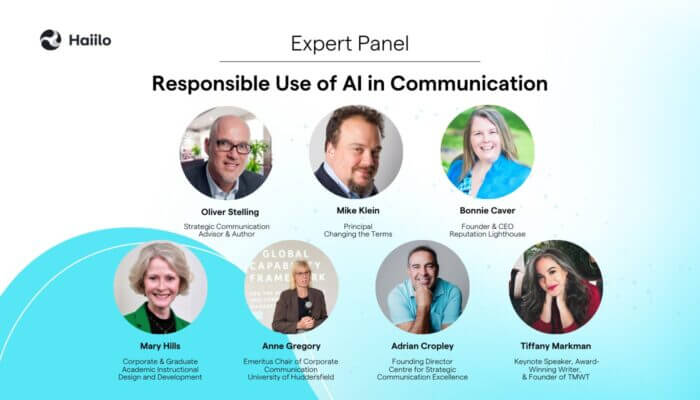Communication barriers can have a significant impact on people’s personal and professional lives. This is particularly evident now when people around the globe have been facing social distancing restrictions.
When we are limited to communicating using digital tools and technologies, communication barriers have an even bigger impact. However, digital means of communication are here, and they are here to stay.
💡Check out Top 5 Communication Skills and learn how to improve internal communication in the workplace!
Employers across the world are forced to adjust to the new way of working, and they need to better accommodate their employees. Therefore, now when we depend on technology to communicate with our peers and colleagues, we need to find ways to leverage it and even use it to eliminate the existing communication barriers.
Eliminate communication barriers with the right internal comms tool.
Communication Barriers Defined
Communication barriers can include anything that prevents or disables communicators to deliver the right message to the right person at the right time, or a receiver to get the right message at the right time.
There are 3 main categories of communication barriers that can make effective communication challenging.
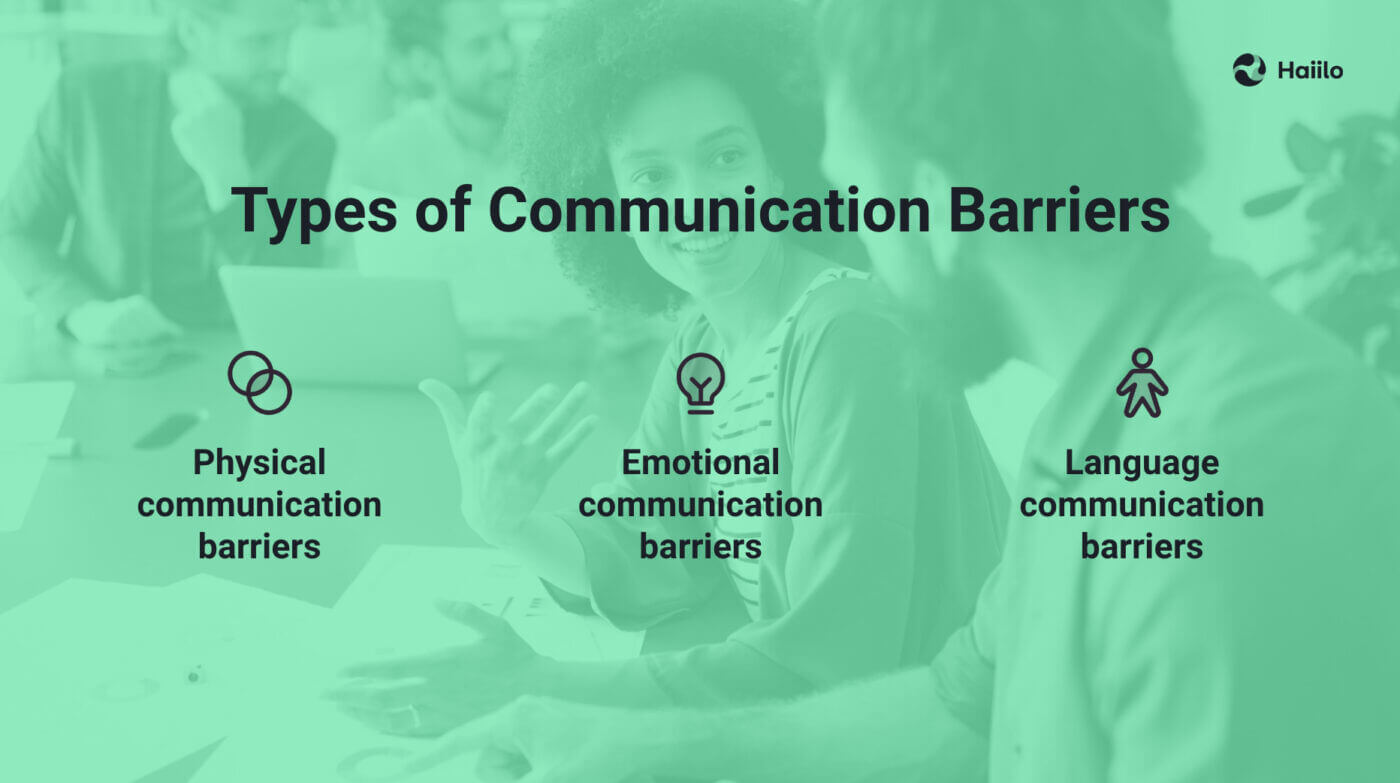
- Physical communication barriers such as social distancing, remote work, deskless nature of work, closed office doors, and others.
- Emotional communication barriers resulting from emotions such as mistrust and fear.
- Language communication barriers that refer to how a person speaks both verbally and nonverbally.
However, these communication barriers present just a high-level overview of the cause of inefficient communication. Let’s take a deeper look into some of the most common communication barriers that employers face today.
📹 If you prefer video content, you can also watch our Masterclass!
Top 13 Communication Barriers Organizations Face Today
When talking about communication barriers in the workplace, challenges to effective communication are more obvious than ever before. Multigenerational workplaces, the rise of remote work, dispersed workforce, the introduction of new communication technology and different employee expectations are just a few examples of communication barriers that have emerged in the past few years.
1. Communication skills and styles
People have different communication skills and styles. Oftentimes, these differences in communication skills can create communication barriers between the communicator and the receiver of the message.
For example, while some people may be highly detailed and specific when communicating, others may tend to generalize. Even though communication skills are extremely important, only 18% of employees are evaluated on their communication skills in performance reviews.
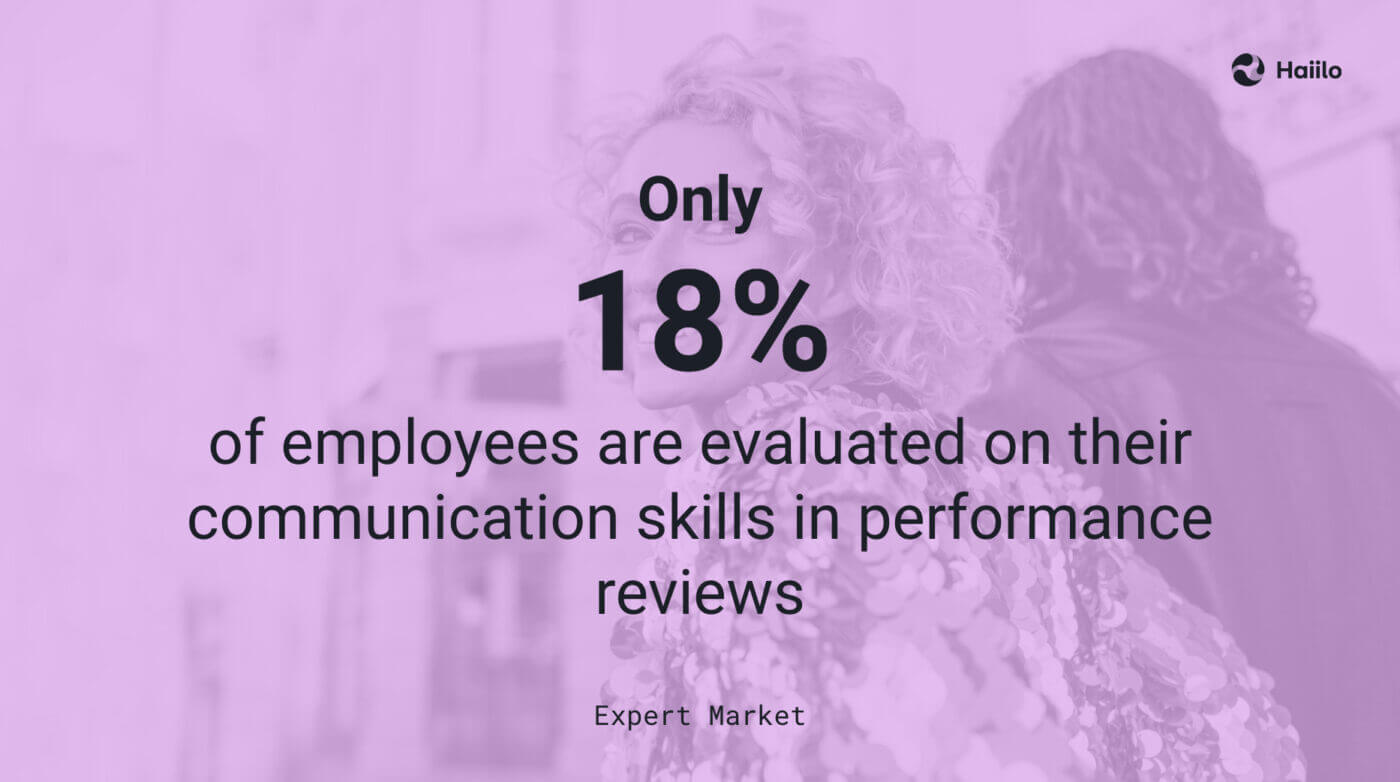
2. Social distance and physical barriers
As mentioned earlier, many companies now depend on virtual communication due to social distancing and remote ways of working. These physical barriers are even more evident within organizations with blue-collar employees without designated working space.
Such barriers can go a long way in causing damage to an organization that doesn’t know how to leverage technology to eliminate communication challenges.
3. Disengagement
Effective communication is about engagement between the parties involved in communication. When there is no engagement from both parties, this ruins the purpose of effective communication.
Unfortunately, organizations across the world are fighting the problem of disengaged workplaces. They are struggling to catch their employees’ attention and drive a culture of open, engaged, and transparent workplace.
4. Organizational structure
Complex and rigid organizational structures can be the main culprit for inefficient communication, making it one of the most common communication barriers. Such organizations may have inefficient information sharing and communication systems, often resulting in frustrations, lack of engagement, and productivity among employees.
If a company is highly hierarchical, information can easily get siloed, lost or distorted as it travels through each layer of the hierarchy.
5. Information overload
Too little information is not good, but too much information can cause even more damage. Yet, information overload has always been one of the biggest communication barriers. Moreover, information overload has proved to have a very negative impact on employees’ well-being, productivity, and success at work.
6. Lack of trust
When there is no trust, there is no effective communication. In other words, when employees don’t trust their employers, leaders, or managers, communication suffers.
This is the reason why one of the main goals for organizations across the world has become to build trust in the workplace. Yet, many employers still have a long way to go to become more trustworthy.

7. Clarity, consistency, and frequency
Communications professionals need to understand the importance of clear, consistent, and frequent communication. When messages across different channels are not consistent, trust gets hurt. When messages don’t get delivered frequently or in a timely manner, employees miss out on important information or updates.
According to a Gallup study, employee engagement increases when managers provide consistent and clear communication. Another study shows that 4 out of 5 employees surveyed want to hear more frequently about how their company is doing, and more than 90% of employees surveyed say they would rather hear bad news than no news.
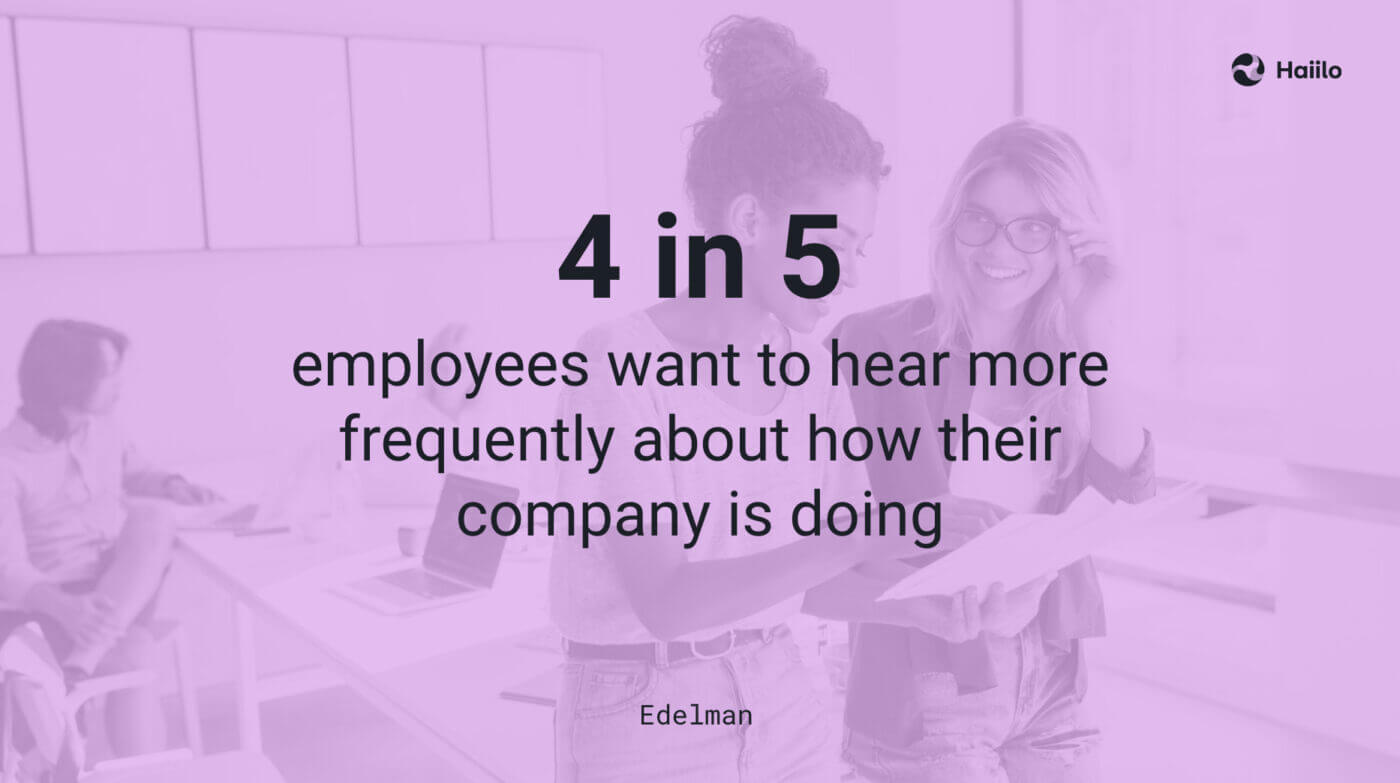
8. Listening
Communication should always be a two-way street. Moreover, listening is often much more important than speaking. Yet, many companies still don’t understand the importance of encouraging employees’ share of voice and the value of their feedback.
Those who drive and nurture the culture of open workplace communication enjoy a happier, healthier, and more engaged workforce.
9. Wrong communications channels
There are many different communication channels people use nowadays. The same is true for companies, especially large enterprises. Such complexity in the communication ecosystem makes it hard for employers to make sure that they use the right channels to inform their people and deliver relevant information in a timely manner.
As a result, the average employee spends around 20% of their time searching for internal information.
Many communications professionals have started practicing multichannel communications to eliminate this communication barrier.
10. Demographic and cultural differences
The way people interact with each other can vary depending on the demographic and cultural differences. If communicators are not aware of these differences, communication barriers will arise.
Hence, it is important to find a common ground for effective communication and adapt to the work culture of the organization to communicate effectively.
11. Wrong communication technology
Communication technology can make or break any organization’s communication strategy. In the sea of available technology, employers need to be able to find and implement solutions that best fit their organizational needs and goals.
Luckily, modern internal communications solutions are made to tackle the biggest communication barriers.
12. Lack of personalization
Lack of personalization is one of the biggest reasons why disengagement happens. When receivers get information that is not relevant to their nature of work, or messages that are of no interest to them, they are much more likely to ignore future communications coming their way.
Content localization has, therefore, become one of the main priorities for communication professionals whose goal is to improve employee engagement and experience in the workplace.
13. Grapevine communication
American Management Association estimates that 70% of all organizational communication emanates through the grapevine. Moreover, most people deem it trustworthy as well.
This informal type of communication may have a significant impact on your people, your business performance, and your ability to build trust with your employees. Therefore, it is crucial for employers to understand the power of grapevine communication in order to be able to control and manage it effectively.
📙 Read more about how to tackle grapevine communication.
6 Ways to Eliminate Communication Barriers in the Workplace
Communication barriers can never be completely eliminated. However, there are ways to reduce their negative consequences and make communication more streamlined and effective.
Digging deeper into the causes of barriers in communication and a better understanding of people’s communication preferences are the most important prerequisites for effective communication.
Let’s now take a closer look at the 5 ways to tackle communication barriers in the workplace.
1. Understand your multigenerational workforce
There are 5 working generations right now:
- Traditionalists – born in 1945 and before
- Baby Boomers – born between 1946 and 1964
- Generation X – born between 1965 and 1976
- Millennials – born between 1977 and 1995
- Generation Z – born in 1996 and after
Since these generations have different communication preferences, neglecting to adjust to them forms an inevitable communication barrier. We need to better understand these differences and adapt to them in order to make communication more efficient.
For example, millennials and gen Z employees are used to having personalized news feeds on social media. They like to build online communities, share insights, and look for recommendations on their favorite social channels. This is the communication experience they also expect from their employers.
💡 Related: How to Identify if It’s a Communication Problem or Something Else
2. Make communication more agile
Earlier, we saw that highly hierarchical organizations can struggle with communication more than those within which information flows freely. In today’s ever-changing world, it is extremely important to implement more agile means and ways of communication.
Information should always flow both ways, upward communication should continuously be encouraged, and employers should be able to quickly reach their target audiences.
3. Create and share engaging and personalized content
People want to consume authentic, engaging, and fun content. The days when we would just send mass emails to the entire workplace are dead.
Moreover, 26% of employees view email as a serious productivity killer.
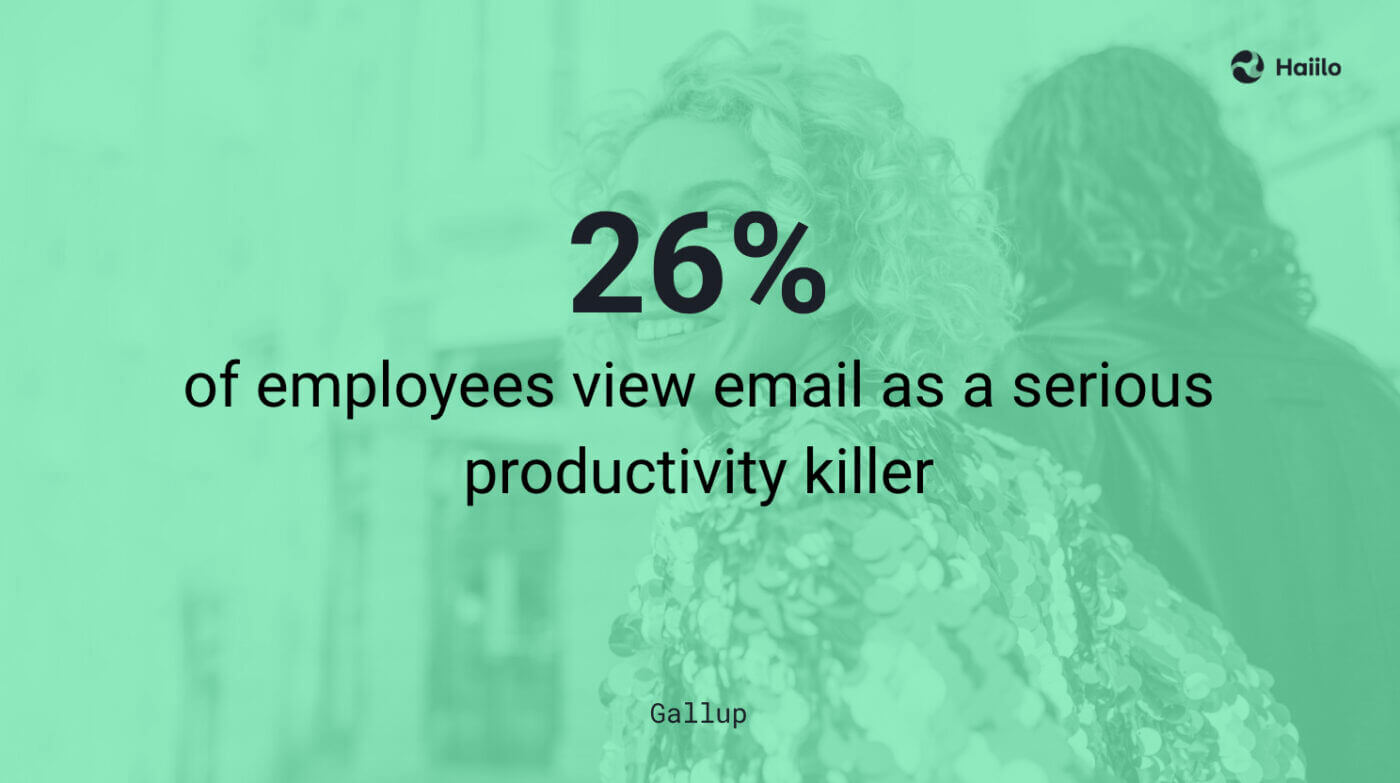
In their personal lives, people consume media in increasingly smaller bites. Long-form content is still here, but social media has shown us that organizations need to share messaging in people’s preferred formats, including video, infographics, webinars, podcasts, and memes.
Additionally, content irrelevancy also creates barriers to communication. Yet, many organizations don’t have ways to better segment their internal audiences based on various criteria such as age, location, job function, language, interest, and preferences.
Hence, irrelevant content can be the biggest cause of disengagement and poor workplace experience.
4. Switch to mobile-first communication
Since communication is highly digital today, we need to better understand people’s preferred communication devices in both their personal and professional lives.
Millennials, who are the largest generation in the US labor force, are projected to represent 75% of the global workforce by 2025. Them and generation Z both grew up in the technological age, they are always connected and can’t spend a few hours away from their smartphones. Moreover, they check their phones 150 times a day!
Therefore, switching to mobile-first communication can go a long way to eliminating some of the most significant communication barriers.
5. Use the power of data and technology
We need to better understand how to leverage digital means of communication. Yet, many organizations don’t have access to the new and modern communication technology that enables them to do so.
Since the communication ecosystem has become highly complex, employees expect their organizations’ communication tech stack to work in the cloud and be highly integrated. For example, instead of having multiple communication channels such as email, intranet, Slack, Yammer, Microsoft Teams, document sharing tools, and others, we need to look for ways to consolidate them all into a single employee communications platform like Haiilo or Workplace.
Additionally, having access to communication data and insights are a powerful way to find, assess, manage, and reduce many communication barriers.
6. Leverage AI
Artificial intelligence can play a huge role in eliminating many of the communication barriers. While translation tools can help eliminate cultural and language barriers, data and generative AI can help communicators create and distribute more engaging content.
More and more professionals in the communications world have started using AI to improve their skills and save time wasted on manual and repetitive tasks. Even though some don’t agree, AI can (and should) be used to allow people to focus on what machines can not do.
How to Create a Successful Communication Plan
In order to eliminate communication challenges, it is important to have a well-crafted communications plan. When building such internal communications plan and strategy, these are the questions communicators should answer:
- What are the current communication barriers?
- What is the ultimate communication goals, how will we eliminate existing communication barriers?
- Who is your audience and what are their generational and cultural differences?
- What are the key messages you want to communicate and the topics you want to address?
- How will you distribute messages and which communication channels will you use?
- How will you measure the success of your communication plan and strategy?
📙 Continue reading about the importance and best practices for building a successful communication plan.
The Role of Technology in Overcoming Communication Barriers
Technology can play a significant role in reducing many of the previously mentioned communication barriers. Moreover, such technology is made with that goal, and it aims to help people build better relationships and drive more engagement.
With the use of the right communication technology, organizations can:
- Create engaging content.
- Segment audiences to deliver personalized information.
- Schedule content delivery for optimal timing.
- Create personalized news feeds based on the audience’s preferences.
- Connect communication with the ultimate business KPIs.
- Measure the impact and success of the engagement.
- Understand the audience’s favorite forms of communication and preferred communication channels.
- Drive two-way communication and encourage employees’ share of voice.
- Empower leadership to be more approachable.
- Reach the hard-to-reach audience with the right message at the right time.






